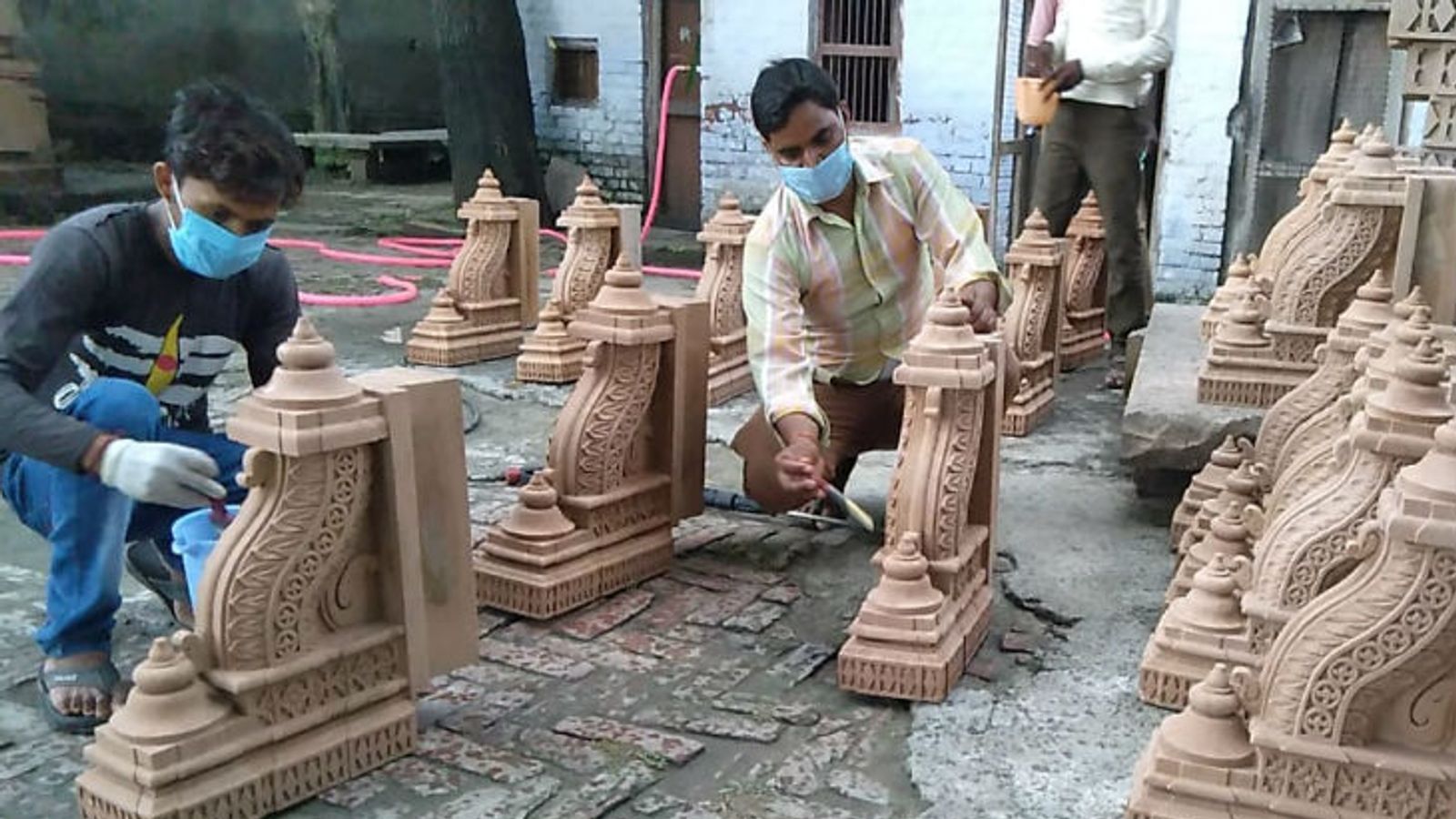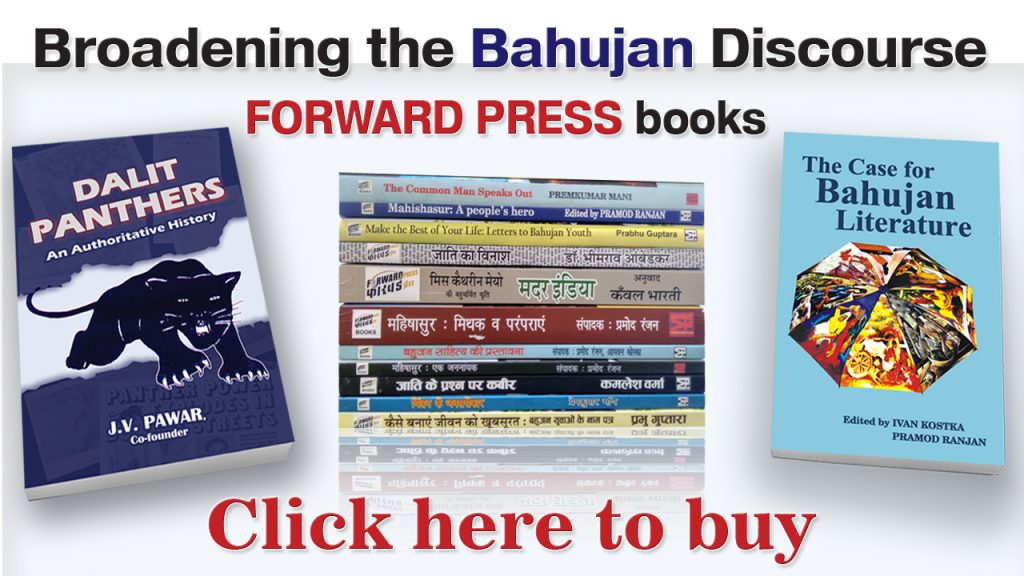The sixth day of December is observed as the death anniversary of Babasaheb Ambedkar. The manuvadis conspiratorially chose the same day for pulling down the Babri Masjid, which they now celebrate as Shaurya Diwas. This was part of a deliberate exercise to replace a day that symbolized social equity with one that represented communal hatred.
Dr Ram Manohar Lohia had said that in India, communalism was born of casteism. Once casteism ends, the Hindus will no longer hate the Muslims and the Christians. A majority of the Muslims and Christians in the country are Dalits who embraced these religions in their quest for dignity and equality. The Brahmins know this, which is why they hate Muslims and Christians just as they hate the Dalits.
To understand this game, we need to understand whom or what the Rashtriya Swayamsevak Sangh (RSS) and the Bharatiya Janata Party (BJP) represent. The RSS was founded by the Brahmins. Even now, the top brass of the RSS come from the ranks of the Brahmins, Thakurs and Banias. The traditional socio-economic structure of India accords a higher position to the idlers and a lower status to the toiling Shudras. The toiler communities were forced into penury for ages. This was economic injustice. One community worked, the others enjoyed the fruits of their labour. Social inequality was founded on this economic loot, and the exploitation and loot was justified in the name of religion.
Adivasis, Dalits, farmers and women joined the nascent Indian struggle for independence in big numbers. Simultaneously, in the Brahmin citadel of Pune, Jotiba Phule and Savitribai Phule began a campaign for educating Shudras and women. This unnerved the patriarchal, casteist and exploitative Savarnas. Hedgewar, the first Sarsanghchalak of the RSS, declared in 1925 that the organization was meant to counter the challenge to Hindu religion from the Shudras and the Mlecchas.

The Varnas and the social classes which had monopolized wealth and respect without working took the participation of the Dalits, the Adivasis and the women in the Independence Movement as a challenge to their traditional dominance. The elites realized that Independence would sound the death knell for their centuries-old privileges. That is why the RSS opposed the Independence Movement and declared that the Muslims, the Christians and the pro-equality Communists, and not the British, are their real enemies.
A section of the savarnas in the national movement led by Gandhi was beginning to hold the view that the caste system should end. The RSS hated this section and hates it even today, branding them as traitors and secularists. The genesis of the conspiracies for Gandhiji’s murder lay in his opposition to untouchability. After signing the Poona Pact with Babasaheb, Gandhi announced that the rest of his life would be devoted to freeing Hinduism from the scourge of untouchability. That led to the RSS decision to eliminate him. The first attempt on Gandhi’s life was made in 1934. The RSS made a total of five attempts to kill Gandhi and succeeded ultimately. It must be remembered that Gandhi’s murderer was a casteist Brahmin.
The leadership of the RSS and the Hindu Mahasabha began scouring for ways to preserve their position at the top of the social hierarchy and to perpetuate their right to exploit others. To stop the march of India polity towards social and economic justice, they began poisoning the minds of the Shudras and Atishudras, urging them not to fall prey to leftist concepts like equality. They said that, instead, they should work to restore our ancient glory. To this end, they constructed a fictional past of Indian civilization and started spreading false narratives about the atrocities committed by the Mughals and other Muslim rulers on the Hindus.
As the RSS and the Hindu Mahasabha were helping divide the country along communal lines and were opposing the Independence Movement, the British rulers aided them in every way. British historian John Stuart Mill divided Indian history into three periods – Hindu, Muslim and British. This was mischievous. There was nothing like a ‘Hindu Period’ in Indian history. India was ruled by Buddhist and Jain rulers. Describing them as Hindus was aimed at strengthening the Hindutva narrative of the RSS.
Many facts that have come to light show that the RSS had given the slogan “Restoration of Hindu Pride” to stop India’s march towards equality and as part of this mission, it had installed the idols of Ram by breaking the locks of the Babri Masjid just a year after Independence. Anand Patwardhan’s film Ram Ke Naam (1992) shows how all this was done.
After installing the idols in the mosque, the RSS began misleading the public by saying that the Muslims pulled down the temple located at the very place where Lord Ram was born and that they were not allowing the Hindus to rebuild the temple. This was utter rubbish. Ram became popular among the masses after Tulsidas wrote Ramcharimanas in Awadhi. No Ram temple existed in India before that. After Ramcharitmanas, more than 400 temples came up in Ayodhya and the priest of each of them claims that his temple is at the exact place where Ram was born. But to polarize the people along religious lines, the RSS insisted that Ram was born at the place where the Babri Masjid stood. Interestingly, Tulsidas was a contemporary of Akbar. Babar was Akbar’s grandfather. There was no Ram temple in Ayodhya during Babar’s reign. So, going by RSS’s timeline, the temple constructed during the reign of the grandson was demolished by the grandfather! This is how the RSS distorted history and made fools out of hundreds of millions of Hindus. It captured power in the name of Ram. Last year, Prime Minister Modi laid the foundation stone of Ram temple in Ayodhya and projected it as a big victory for the Hindus.
Now, who gained and who lost due to the Ram temple movement? The Dalits and the OBCs were the biggest losers. The savarnas led from the front in pocketing the donations received for the construction of the temple. The income that will accrue from the temple in the future will go to the Brahmins. However, most of those who died during the movement were Dalits and OBCs. Similarly, Dalits and OBCs make up most of those jailed in the aftermath of the anti-Muslim riots in Gujarat. There are very few Brahmins and other savarnas among them.
The movement was used to launch an attack on the reservations regime, which was then extended to the savarnas. Meanwhile, reports of reservations for the OBCs being curtailed have been pouring in. Government companies have been privatized. This is also an attack on reservation, for private companies are not obliged to follow the reservation norms. Laws regulating the minimum wages, maximum hours of work and firing of workers were also changed. This benefitted the capitalists and hurt the workers, whose rights were taken away. A caste census of workers in the low pay grades would reveal that Dalits and OBCs are the majority among them. Thus, the clamour for the Ram temple has severely harmed the Dalits and the OBCs.
The RSS used the movement to pit Dalits and OBCs against the Muslims, because of which the concept of Bahujan is yet to become a reality. Savarnas form just 15 per cent of India’s population while the rest are Dalits, OBCs and minorities. The RSS has strengthened its rule by sowing the seeds of hostility and distrust among 85 per cent of the population.
(Translation: Amrish Herdenia; copy-editing: Anil)
Forward Press also publishes books on Bahujan issues. Forward Press Books sheds light on the widespread problems as well as the finer aspects of Bahujan (Dalit, OBC, Adivasi, Nomadic, Pasmanda) society, culture, literature and politics. Contact us for a list of FP Books’ titles and to order. Mobile: +917827427311, Email: info@forwardmagazine.in)
The titles from Forward Press Books are also available on Kindle and these e-books cost less than their print versions. Browse and buy:
The Case for Bahujan Literature
Dalit Panthers: An Authoritative History






